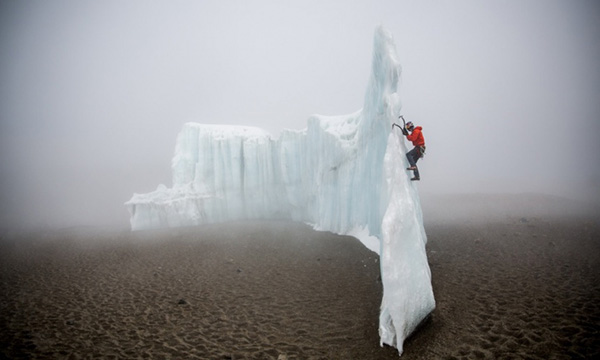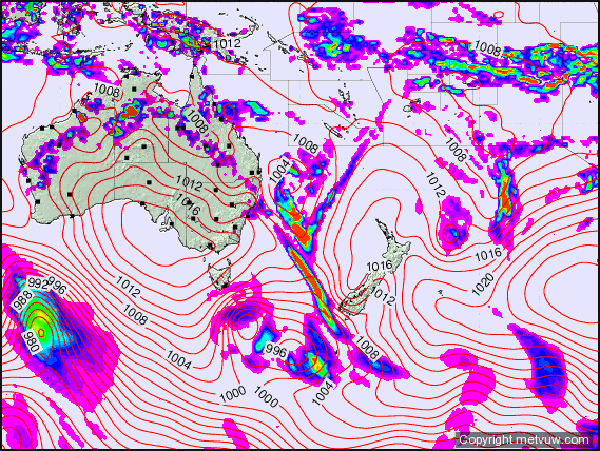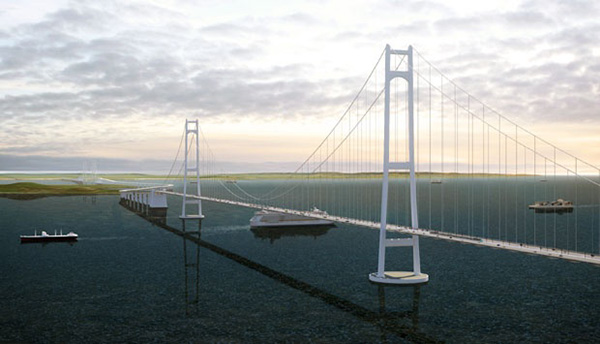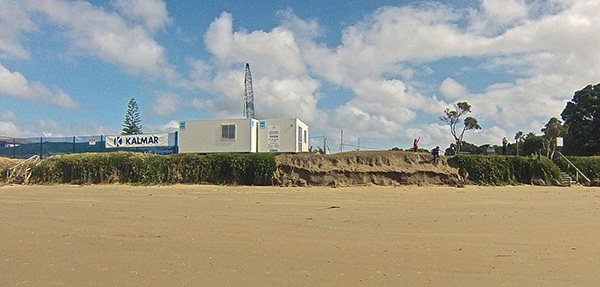Zero-carbon energy ultimate nuclear waste solution

Curtailing the Snows of Kilimanjaro: Al Gore was roundly criticised when he got a little ahead of the science by using Mount Kilimanjaro as a poster child for global warming. His far more serious sin, however, was to hang nuclear power out to dry, in exchange for the support of Democratic Party environmentalists. photograph Christian Pondella
In the last 6 years and 8 weeks of published measurements, global sea level has risen a whisker more than an inch.
At least that is the raw, seasonally adjusted data from the incredible, and credible, Jason 2 satellite, however, the El Niño–Southern Oscillation and many other phenomena need to be factored in. But given that the average annual sea-level rise for the twentieth century was only 1.7 millimetres, a rate anything like 40 millimetres in this decade and 80 in the next should be sufficient to convince the most laidback voter or politician that humanity faces a problem of biblical proportions, not least of which is the drowning of all beaches and their replacement with muddy, constantly retreating coastlines.
The primary cause of anthropogenic global warming, the burning of fossil fuels, is something that has been progressively unnecessary since the Obninsk nuclear power station went online 60 years ago, June last year. But nuclear power was born of weapons-of-mass-destruction, and the failure to internationalise that technology for peace caused the Cold War. In turn, the Cold War, with its potentially mutually suicidal build-up of nuclear weapons, poisoned the people against nuclear power. That, and the seemingly intractable issue of nuclear waste, plus the risk that, with a proliferation of countries with nuclear power stations, a rogue state, or organisation, could roll-their-own weapon of mass destruction.

Near Miss: While much can change in eight days, MetVUW’s forecast suggests the Mahurangi Regatta might dodge a bullet next Saturday. With soils in the catchment baked hard, it is to be hoped that when much-needed rain arrives, it begins more gently than from the likes of the low forecast to lurk to the northeast during the days leading into the regatta. chart MetVUW
Additionally, the notion that any radiation released was going to cause someone somewhere to sicken fueled a healthy hatred of weapons testing, but also a distinctly unhealthy fear of radiation, fostered by the linear-no-threshold doctrine. Linear-no-threshold flies in the face of the science, which actually supports a Goldilocks, healthier, low level of radiation. For example, the massive, four-year study of radon levels in homes versus lung cancer rates, whereby, contrary to his expectations, Professor Bernard L Cohen:
…was therefore driven to conclude that radon is actually protective against lung cancer—even in smokers—within the ranges found in US homes.
Ten years after Obninsk began pouring electricity into the grid, an alternative to storing nuclear waste for 100 000 to 500 000 years was demonstrated, at the Argonne National Laboratory, Illinois. Firstly, the process, when fuelled with uranium, uses 99% of its fissile material, compared with the 1% achieved by conventional nuclear power plants, and that tiny remainder then only requires to be stored for about 300 years. Next, the process is also capable of burning the existing stockpiles of weapons-grade plutonium that present such scary potential in the hands of rogue states or well-resourced terrorists. Finally, the technology opened the way to fuelling nuclear reactors with thorium, which is three to four times more abundant than uranium, and a thorium-fuelled reactor cannot easily be tweaked to produce weapons-grade plutonium. All this and, as near as any electricity can claim to be, 100% fossil-fuel-free, and at a competitive price, if the fact that the price of electricity in France is about half it is in Germany, is any indication.
What blocked this transformative technology was the general public’s fear and loathing, by the 1960s, of all things perceived to be radioactive. Never mind that parents gratefully allowed their children to be x-rayed if a broken bone, or worse, was suspected, radiation from ‘the bomb’ or from nuclear power was seen as an indestructible poison that would spawn cancers and deformities until the end of time. Never mind, also, that humanity, and life itself, evolved in a natural pea soup of radiation. Never mind that the average granite benchtop will send a Geiger counter into a frenzy of clicks, or that some benchtops have been reported to elevate the concentration of radon gas, which is great for causing lung cancer, in a kitchen to 25 times higher than the level at which remedial action is officially recommended.

That’s a Road of National Significance: Aside from the psychological barrier of voluntarily submitting to entering the 55-kilometre long submerged tunnel involved, if a submerged floating tunnel was used as a zero-carbon means of crossing Cook Strait, a proposal to cross the 24-kilometre span of the Sunda Strait, at US$15 billion, dipped out to this US$10 billion bridge concept that in turn was shelved last year by which time its projected cost had surpassed $15 billion. image PT Wiratman and Associate
Twenty years ago, egged-on by Al Gore, the Argonne National Laboratory’s reactor was shut down by President Bill Clinton, to appease the Democratic Party’s powerful anti-nuclear faction. It hadn’t helped that the technology had become known as the fast-breeder reactor—if nuclear reactors were already bad, how much worse must a fast-breeder be! But the fast has to do with fast electrons, and their beauty is that they facilitate the more-complete combustion of fissile material. The breeding part, came first, however. Breeding, is a process whereby reactors breed more fissile fuel than exists in their initial fuel supply. Aside from terrestrial reserves, the economically recoverable uranium in the planet’s oceans can power humanity’s current needs for a sustainable 5 billion years. Given that the sun, in somewhere from 500 million to 1 billion years’ time will burn so hot that Planet Earth’s oceans will evaporate, nuclear power represents sustainability overkill.
The first pair of small-modular, fast-breeder reactors are scheduled to become operational in China in 2017, followed in 2018 by other, Russian built, fourth-generation nuclear power plants. The Russian lead-cooled fast reactor technology has the additional potential of being well-suited to powering ships, which typically burn bunker oil—about the dirtiest fuel this side of coal. Given the small amount of wriggle room that aviation has to reduce greenhouse gas emissions, everything and every person that can be transported by sea rather than by air, needs to be. Short of connecting its North and South islands with a submerged floating tunnel, Aotearoa has only one low-carbon option for powering its interisland ferries: nuclear. While a floating tunnel could be 100% electrically powered, its cost would rival New Zealand’s $95 billion national debt. And while a hydrogen-fuel-cell powered ferry sounds green enough, nuclear power is the only practicable means of economically producing hydrogen in quantity.
Accelerating sea-level rise is today alarming, but this year’s northern summer could see the Arctic Ocean effectively ice-free. From that point the already rapidly warming Arctic will warm much more quickly, because so more of the sun’s energy will be absorbed by the less reflective ocean surface, which Professor Peter Wadhams states:

Where’s the Point: Auckland Council’s crystal clear signal it doesn’t get global warming. Given the inevitability of multi-metre sea-level rise this century, Auckland Council is making a rod for its own and its ratepayers’ backs by consenting luxury dwellings, such as the Ocean Point Beach development, on land behind the Ōrewa Beach that should long-since be subject to plans for managed retreat. photographer Dr Roger Grace
…is like increasing our emissions by a quarter.
In anybody’s language, that is a climate tipping point, and Greenland’s ice sheets, when completely melted, will raise sea level by about 6.5 metres. This prospect, somehow, must be communicated in such a way that humanity is excited into fighting for its survival. A century ago about 70 000 of the 100 444 who served in the First World War were volunteers. Ahead of last year’s election, more than 60 000 signed up as climate voters, largely due to the efforts of Generation Zero. Although this is a much smaller percentage, given population then was a quarter it is now, it does suggest that if Aotearoa mobilised for iconic, meaningful climate action, young people would volunteer in droves. Protection of New Zealand’s coastline is a priority, particularly its already greatly diminished dunelands—by 2000, only about 30% of dunelands remained. But much of its 17 000-kilometre coastline requires additional planting, and much of that with pōhutukawa, not to prevent coastal erosion, which is ultimately impossible, but to mitigate the mess that a constantly rising sea level, eating into soils and softer coastal materials, generates, to the great detriment of water clarity and marine life. At a time when humanity will have the greatest need of it, seafood will be at its most scarce.
Generation Zero, meantime, is helping to direct a deluge of submissions to Auckland Council in support of the sublime Auckland Harbour Bridge Skypath, by having set up:
It is to be hoped that Generation Zero will morph into a fully-fledged political movement that will field its own twentysomething climate-action candidates at the local government elections in 2016.
But first it needs to find the courage to develop evidence-based energy policies that are honest about the need for nuclear power.
Update Of the total 15 000 submissions received by Auckland Council by the 23 January deadline, 11 382 were made through Generation Zero’s ‘quickest submission form ever’.

There is an alternative to the proposed Skypath. It is a gondola similar to the one at Queenstown but large enough to to carry cycles. The gondola would probably cost would less than one tenth of the cost of the Skypath. Because of its low cost, there is every chance that it would be commercially viable and funded by the developer. This means it would cost the ratepayer nothing. Incidentally the load on the existing bridge would be a mere fraction of that of the proposed Skypath. As nice as it would be to have a Skypath, there is little doubt that it is going to be huge burden on the ratepayer.